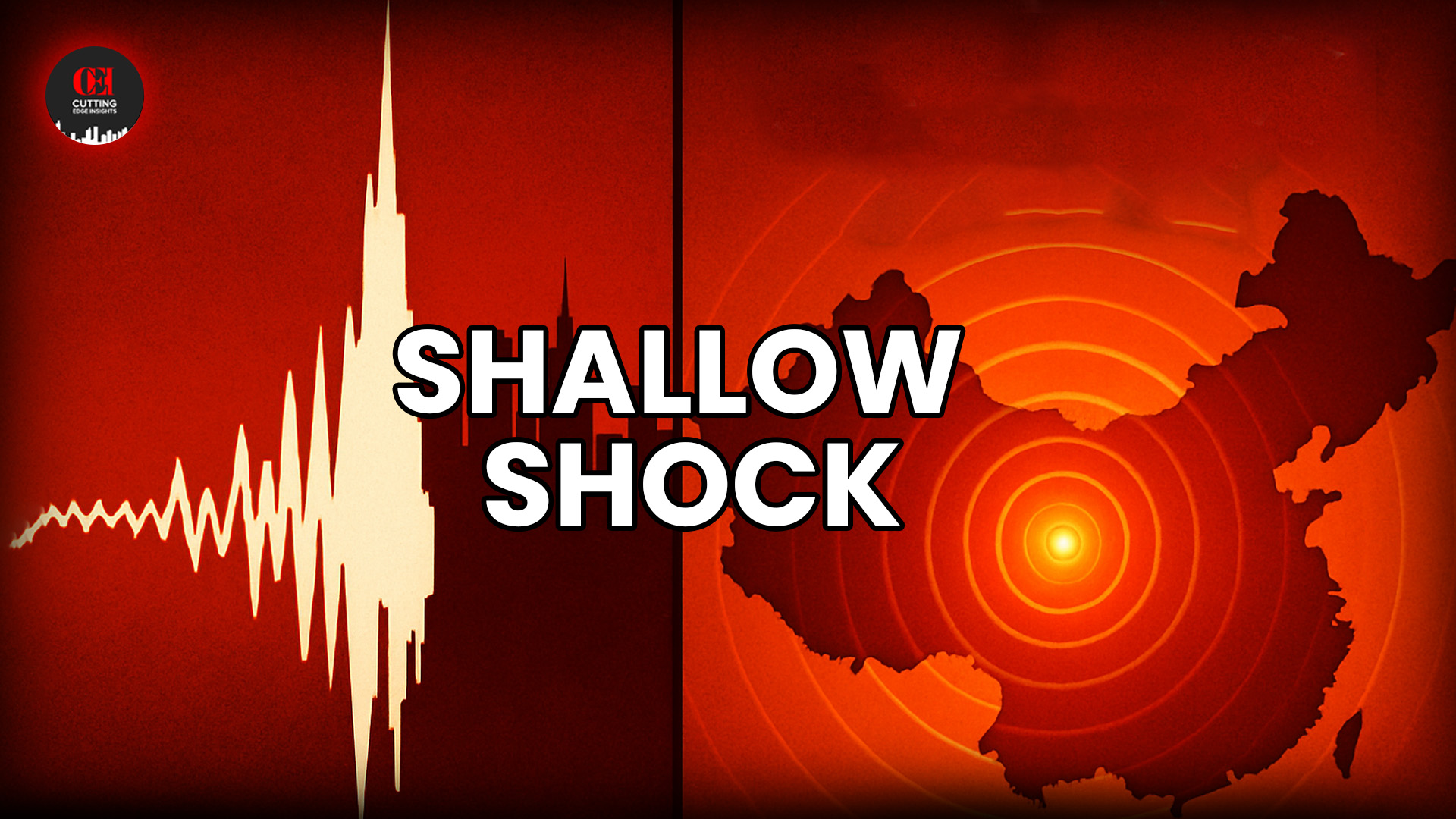An earthquake of magnitude 4.2 jolted western China in the small hours of Wednesday, and while the initial shaking lasted barely ten seconds, its message was deafening: even “moderate” quakes can punch above their weight when they erupt close to the surface. Recorded at a depth of just ten kilometres, the event sits in the category seismologists label “shallow,” meaning its energy burst almost directly into towns, villages, and transport corridors before it had the chance to dissipate. In practical terms, that shallow origin amplifies ground acceleration—think of a loudspeaker turned to full volume with the cone pressed right against your ear. Aftershocks are also more likely, because the crust in the rupture zone has been shoved abruptly out of equilibrium. For residents in nearby counties, Wednesday’s pre-dawn tremors were therefore not a one-off scare but the first chapter of a jittery twenty-four-hour watch.
China’s vast territory straddles the tectonic wrestling match between the Indian, Eurasian, and Pacific plates, leaving it with one of the most variegated seismic landscapes on Earth. The 2008 Wenchuan disaster in Sichuan, which killed nearly 90,000 people, and 2010’s Yushu quake in Qinghai are stark reminders, yet every few weeks lesser-known micro-faults awaken and rattle local communities. Wednesday’s 4.2 is a textbook example. It was too small to topple well-engineered high-rises in the nearest major cities, but strong enough to crack unreinforced brick walls, trigger minor landslides on steep hillsides, and send shopfront CCTV cameras swaying like pendulums. Social media lit up with videos of ceiling lamps dancing above kitchen tables and students sprinting out of dormitories in their slippers—proof that magnitude is only half the story; depth and local geology decide how vicious the shaking feels.
Why did some residents experience the quake as a violent jolt while others felt nothing? Soil composition is a hidden culprit. Loose, water-rich sediments common in river valleys can amplify seismic waves, acting much like a bowl of jelly quivering from a tap. Mountain villages perched on bedrock often fare better because hard rock transmits vibrations quickly but with less amplification. This ground-type lottery explains why two neighbourhoods a few kilometres apart can report wildly different damage tallies.
The episode also exposes a demographic wrinkle: China’s rapid urbanisation has packed millions into mid-rise apartment blocks erected during the 1990s construction boom—before today’s more stringent seismic codes took hold. Retrofitting remains patchy, and smaller county governments often juggle tight budgets against sprawling public-works wish-lists. For cash-strapped councils, Wednesday’s quake is a persuasive argument to prioritise school and hospital reinforcement, not just flagship transport projects. After all, lifesaving infrastructure begins with buildings that stay upright long enough for people to escape.
So what can individuals do after the initial shock subsides? First, resist the urge to rush back indoors; aftershocks can be severe within the first six to eight hours. Second, keep a “go-bag” near the door—water, power-bank, whistle, basic first-aid. Third, if you live in an older structure, lobby your landlord or district office for a post-quake structural inspection; hairline cracks along load-bearing walls can widen invisibly over time. And finally, educate yourself on the Triangle of Life myth versus the scientifically backed Drop, Cover, and Hold On protocol—your best defence when the ground tips beneath you.
Wednesday’s magnitude 4.2 may fade from the news cycle in days, but its deeper significance should linger. It is a kinetic memo from the planet’s restless crust, reminding a fast-modernising nation that progress is measured not only in GDP graphs and high-speed rail tracks, but also in fail-safes and preparedness. The quake’s shallow depth turned a routine tremor into a stress test of building standards, emergency drills, and community resilience. China—and anyone living on a fault line—would do well to treat it as a rehearsal for the bigger dramas geology has pencilled in, dates unknown.











